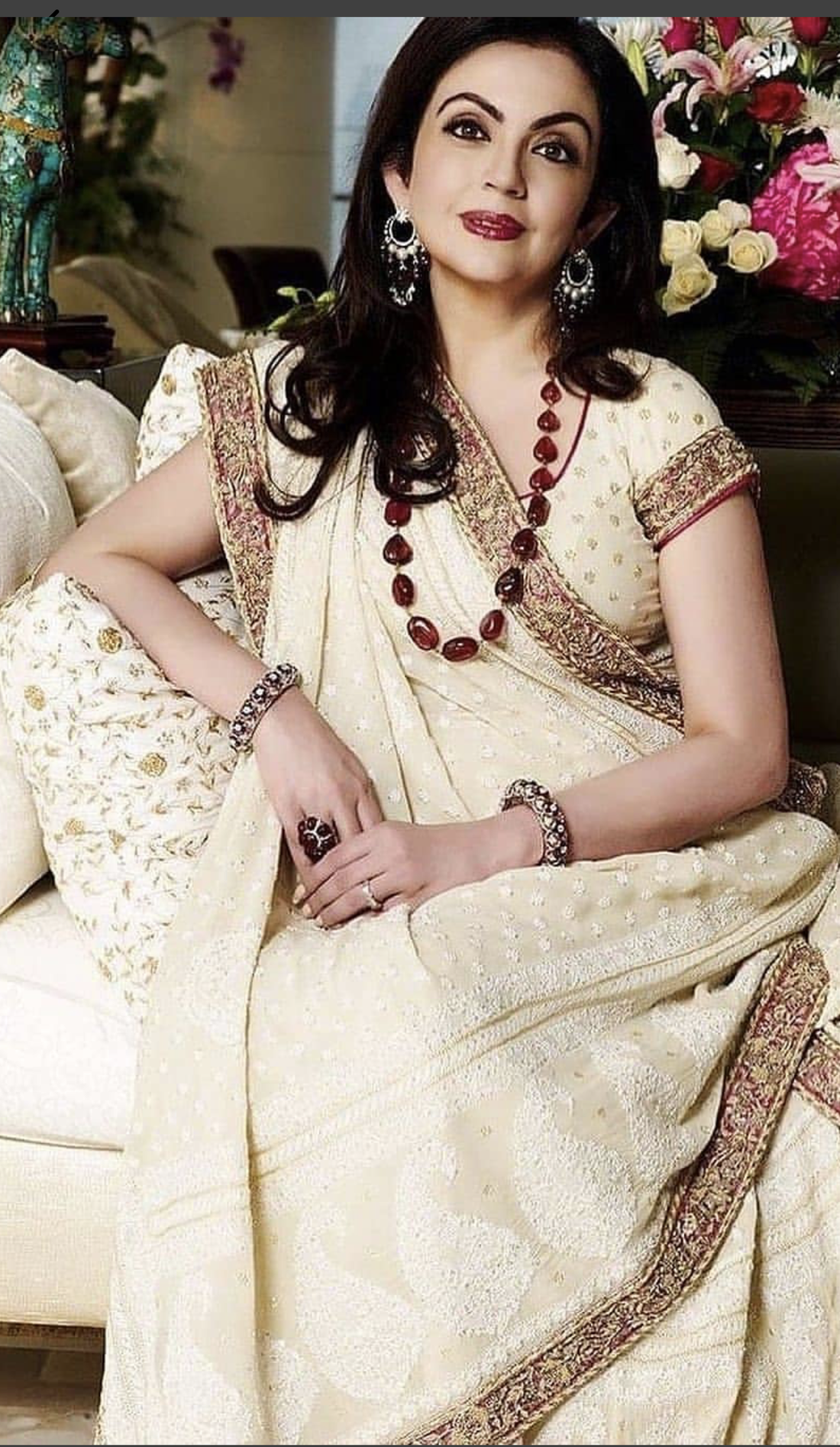Chikankari is a traditional Indian embroidery style that originated in the city of Lucknow, in the state of Uttar Pradesh. It is a delicate and intricate art form that involves embroidery of various patterns and designs on fabric. Chikankari has been a part of Indian culture for centuries and is still popular today. In this blog post, we will discuss the history of Chikankari sarees, different types of Chikankari sarees, popular designs and colors, how to style and care for Chikankari sarees, and much more.
History of Chikankari Sarees
The origins of Chikankari can be traced back to the Mughal era in India. It was a popular embroidery style among the royal families and was often used to decorate their clothing. The word "Chikankari" comes from the Persian word "Chikan," which means embroidery. Chikankari was first introduced in Lucknow by the Mughal emperors, who brought Persian artisans to India. Over time, Chikankari evolved and became a popular embroidery style among the local craftsmen and artisans. Today, Chikankari is a well-known embroidery style in India and is often used to decorate sarees, suits, and other traditional clothing.

Types of Chikankari Sarees
Chikankari sarees come in a variety of types, each with their own unique design and style. Some of the most popular types of Chikankari sarees include:
-
Georgette Chikankari Sarees: These sarees are lightweight and flowy, making them perfect for summer wear. They are often decorated with intricate Chikankari embroidery patterns and come in a range of colors.
-
Cotton Chikankari Sarees: These sarees are made from pure cotton and are perfect for daily wear. They are often decorated with simple Chikankari embroidery patterns and come in a range of colors.
-
Silk Chikankari Sarees: These sarees are made from pure silk and are perfect for special occasions. They are often decorated with elaborate Chikankari embroidery patterns and come in a range of colors.
-
Net Chikankari Sarees: These sarees are made from net fabric and are perfect for parties and other special occasions. They are often decorated with intricate Chikankari embroidery patterns and come in a range of colors.
Popular Chikankari Saree Colors
Chikankari sarees come in a range of colors, from bold and bright to subtle and muted. Some of the most popular colors for Chikankari sarees include:
-
White Chikankari Sarees: These sarees are classic and elegant, and are perfect for weddings and other formal occasions. They are often decorated with intricate white-on-white Chikankari embroidery patterns.
-
Pastel Chikankari Sarees: These sarees come in soft, muted colors like pink, lavender, and light blue. They are perfect for summer wear and are often decorated with simple Chikankari embroidery patterns.
-
Bright Chikankari Sarees: These sarees come in bold, bright colors like red, yellow, and orange. They are perfect for parties and other festive occasions and are often decorated with elaborate Chikankari embroidery patterns.
Chikankari Saree Designs
Chikankari sarees come in a variety of designs, each with their own unique style and pattern. Some of the most popular
Chikankari saree designs include:
-
Floral Chikankari Sarees: These sarees are decorated with delicate floral embroidery patterns, making them perfect for spring and summer wear.
-
Paisley Chikankari Sarees: These sarees are decorated with intricate paisley patterns, which are a classic Chikankari design.
-
Peacock Chikankari Sarees: These sarees are decorated with beautiful peacock designs, which symbolize beauty and grace.
-
Buti Chikankari Sarees: These sarees are decorated with small buti designs, which are a popular Chikankari pattern.
-
Jaal Chikankari Sarees: These sarees are decorated with a large-scale jaal or net pattern, which is a traditional Chikankari design.
How to Style Chikankari Sarees
Chikankari sarees can be styled in a variety of ways, depending on the occasion and personal preference. Here are some tips for styling Chikankari sarees:
-
Pair your Chikankari saree with traditional Indian jewelry like jhumkas, bangles, and necklaces.
-
Choose a blouse that complements the color and design of your Chikankari saree.
-
Opt for simple hairstyles like a bun or braid to let your saree and jewelry take center stage.
-
For a more modern look, pair your Chikankari saree with statement accessories like a clutch or earrings.
-
Experiment with different draping styles like the Bengali, Gujarati, or Maharashtrian style to create a unique look.
How to Care for Chikankari Sarees
Chikankari sarees are delicate and require special care to ensure they last for years. Here are some tips for caring for your Chikankari saree:
-
Always dry clean your Chikankari saree to prevent damage to the delicate embroidery.
-
Store your Chikankari saree in a cool, dry place to prevent mildew and insect damage.
-
Avoid exposing your Chikankari saree to direct sunlight, as it can cause fading and damage to the embroidery.
-
Iron your Chikankari saree on a low heat setting, and avoid ironing directly over the embroidery.
Conclusion
Chikankari sarees are a beautiful and traditional Indian garment that has been popular for centuries. With their intricate embroidery patterns and delicate fabrics, Chikankari sarees are perfect for weddings, festivals, and other special occasions. Whether you prefer a classic white-on-white Chikankari saree or a bold and bright design, there is a Chikankari saree out there for everyone. By following these tips on styling and care, you can ensure your Chikankari saree lasts for years to come.

